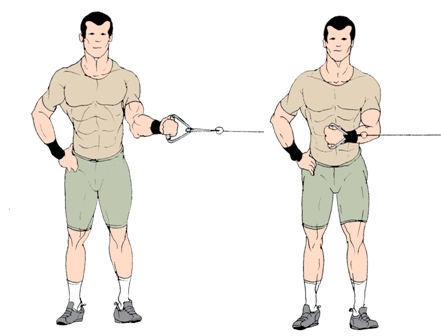
The rotator cuff, commonly referred to as the supraspinatus, is a group of four muscles located in the shoulder which hold your arm in place at the shoulder joint. It helps to make the movements of your arm and hand very easy. The head of the humerus (the head of the upper arm) is attached to the shaft of the shoulder bone, or scapula, which is located just above the elbow joint. When this part of the shoulder moves, it causes the head of the humerus to rotate and this movement is what we refer to as a "sway". Most of us know this when it happens, such as when we try to pull something and the arm starts to rock or a baseball pitcher starts to get an "off" feeling after throwing a ball.
If you have a large amount of movement in one of these four muscles, you may have a case of rotator cuff tears. These tend to be caused by a number of different things, so you will have to do a little research to find out what's causing it. Most often, rotator cuff tears are caused by overuse or too much stress on the shoulder area.
There are several ways that a cuff tear can occur, but the most common way is from overexertion
For instance, if you overuse your biceps, this will cause the biceps tendon to stretch, resulting in a tear in the tendon itself.
If you already have a rotator cuff injury, one of the best ways to prevent further damage is to always maintain good posture. This means that you should always keep your head up and don't slouch. It is also important to always keep your elbows and wrists as straight as possible, because if these are bent they are less likely to tear.
Many times the rotator cuff injuries that occur can be cured through rest and therapy and not surgery. Surgery isn't always an option, but depending on the extent of the injury it can sometimes be the only option.

In order to treat rotator cuff tears, it's important to get your doctor to take a look at your history and make a note of any previous injury. It is important that you understand what kind of treatment your doctor will be recommending, whether it's surgery, physical therapy, chiropractic, or massage. Your doctor may prescribe a certain type of brace or you may have to wear one for awhile.
When working with your doctor, you'll probably be told that there are a couple of ways to do this, including either stretching or strengthening the muscles. While the stretching may seem like it's not so necessary, it is quite effective. This is especially true with the rotator cuff muscles themselves. By doing this exercise routine three times a day, you'll strengthen your muscles, which will help them to stabilize themselves and give you back some mobility.
Once your doctor has finished treating your injury, the real thing to do to help with rotator cuff injuries is to start strengthening the muscles themselves. There are many different exercises that will help you increase the strength and endurance of the shoulder and elbow joints, making sure that you're able to lift heavier and longer weights.
One good way to do this is to perform shoulder press ups, which require you to get as far up off the floor as you can
This will build up the strength and help you lift heavier weights, helping your shoulder joint to remain strong and secure even while lifting heavier weight.
Another great exercise is the lat pull down, which is performed by holding onto a bar with one end bent upwards, while keeping your other hand on the floor. This will help you strengthen the muscles that attach the shoulder to the shoulder blade.
Lastly, there is a unique exercise called the flye exercise that you should perform if you already have rotator cuff muscles and you want to strengthen them even more. To perform this exercise, lay on your back with your knees bent and your hands resting behind your head. Place your right hand in front of the other and then bend your left knee in an attempt to lift yourself up by bending the elbow outwards.